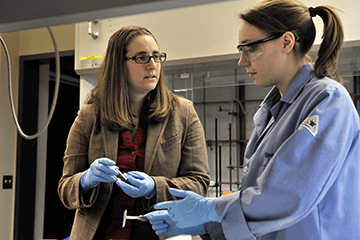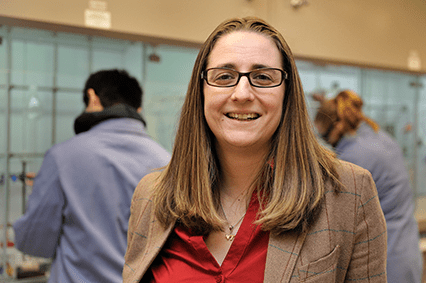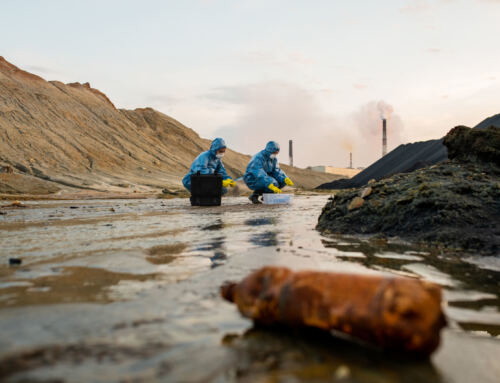Ours is a world that fails to have positive relationships with plastic production and managing CO2 emissions. Plastic products are varied and societally important, yet it’s a relationship that comes with heavy environmental costs. Understandably, there is huge commercial interest in harvesting alternative resources and it looks like the answer could be shining down on us.
- Real vs artificial, the differences
- Artificial photosynthesis: the practicalities
- The future of solar energy
These are the encouraging findings of Prof. Amanda Morris, Associate Chair and Professor of Chemistry and Patricia Caldwell faculty fellow at Virginia Tech, and an American Chemistry Society (ACS) expert in sustainable energy.
She recently joined H.E.L’s Modern Chemistry podcast to talk us through her fascinating work. Her group is committed to the possibility of sourcing alternative commodity chemicals used in daily life from sustainable solar energy, and converting solar energy into stored electric power. Their field of artificial photosynthesis goes beyond existing carbon-based, solar-powered fuels. The potential here is carbon-containing polymers that could be utilized in a broad section of products such as clothes and cell phone technology all harvested from the power of the sun.
The theory behind this complex process is straightforward: artificial photosynthesis is a human-designed process that creates energy from consuming CO2, water and sunlight. It mimics the same process that occurs naturally to help plants grow, but here the outcome is clean, useable energy and plenty of it. An exciting development, especially when CO2 is a major greenhouse gas, with all the complications that go with that.
As Prof. Morris explains, “We should view artificial photosynthesis as broader than just human fuel production. Natural photosynthesis takes carbon dioxide and water, converting them into sugar, to power plants through the day. What we’re doing is re-envisioning that system to generate other fuels. Our work focuses very much on the fundamentals of that, those polymer precursors.”
But why the need for artificial photosynthesis and not use the sun’s power directly? It has been calculated that in just one and a half hours enough solar energy hits the earth’s surface to power the whole of human civilization for an entire year. While this sounds like a great idea, but as ever, things are never quite that simple. It’s how to harness the sun’s power that is proving to be the stumbling block and where batteries and artificial photosynthesis come in.
Real vs artificial, the differences
Artificial photosynthesis takes bio-inspiration from its natural cousin but there’s a range of differences between the two systems. Efficiency is a major factor here, and the area where nature offers the far poorer example. Plant proteins embedded in a membrane, each with a unique job to do, only operate at about 3% efficiency. For example, the chemicals of natural photosynthesis that performs water oxidation are very quick to fail. It’s a process that happens at pace but also at a very low turnover number. Luckily for nature, protein synthesis is on hand to reinstate the flow rapidly and compensate for this shortfall. But a 3% efficiency model certainly doesn’t fit industry requirements, making it impossible to take natural photosynthesis directly from a plant and transfer it to the lab.
However, nature’s model for solar conversion offers far stronger commercial possibilities. Nature has taken eons to create an incredibly efficient system of inter-connected, concentric chlorophyll rings. Perfectly spaced, they are positioned at the ideal angles for light-harvesting molecules to harness solar photons. To similarly convert solar power into useable energy or fuel through artificial photosynthesis, Prof. Morris focuses on porous materials, specifically metal–organic frameworks (MOFs). These compound ion structures or clusters connected to organic ligands interact with solar photons to create electrons and holes that reduce and oxidize. Side by side, the manufactured material and the protein look nothing alike, but understanding why nature does what it does, and then recreate it synthetically, is the bio-inspiration.
“These organic frameworks,” Prof. Morris explains, “oriented efficiently to three-dimensional space, are what exploit the solar photons. Depending on their polymer structure, we can change how the chloroforms orientate to each other, their spacing and what they look like to exploit light. In that arena, we’re closely mimicking nature.”
And even nature’s weaknesses are proving themselves to be opportunities. Within the last 10 years, major steps in understanding have exposed why the catalysts fall apart when oxidizing water in natural photosynthesis, contributing to its low efficiency. It has been discovered that water oxidation happens through a cluster of manganese and calcium, bridged together by oxygen. These look like metal oxides or little metal oxo clusters and it’s these cobalt oxygen clusters, and not the manganese, that oxidize the water so rapidly. This insight has helped groups like Prof. Morris’s to develop artificial compounds that will perform the same task.

Artificial photosynthesis: the practicalities
But surely the elephant in the room, and the flaw with artificial photosynthesis, is that the sun needs to shine for fuel production to be possible? And factors such as geography and time of year, plus the complication that production would be diminished by the number of cloudy days, make it a far from viable financial option.
Fortunately, the team uses solar simulator lamps with filters attached that realistically mimic the solar spectrum. They provide complete details of the atmosphere that the light is passing through and can effectively alter the filters to resemble sunlight in an endless supply. At an industrial scale, the artificial photosynthesis systems would be partnered with battery storage to balance the demand for electricity and the production of power.
So, when putting artificial photosynthesis through its paces how does it positively impact CO2 levels?. Taking excess carbon out of the earth’s atmosphere would be a huge step, but it is not enough on it’s own. A closed-loop system using CO2 to provide all the earth’s energy needs would only remove about 17% of the excess carbon dioxide that humanity is believed to have added to the atmosphere. The example given by Prof. Morris is a typical combustion type engine. Run it via artificial photosynthesis and you create a closed loop cycle: using sunlight is used to reduce CO2, as the CO2 is then oxidized to release energy it is once again ready to be reduced by sunlight, in a, theoretically, infinite loop.
The future of solar energy
Within the next 20 years Prof. Morris foresees that solar energy production will become far more closely tied with industry. She sees a future where increasingly new things will be built with solar energy and batteries in mind. It’s already five years since First Solar won the bid to build a solar battery plant in Arizona, that coupled solar with battery saving and showed that it was far less expensive than building a new natural gas plant.
For her, this would be a great step forward and moves us away from the perennial problem that persists with collecting solar at the domestic level. It has always proved very hard to feed residual domestic solar energy back into a national grid. Existing infrastructures haven’t been designed to do this and overtaxing networks to make it happen causes rolling blackouts and other supply disruptions. Instead, if industry were to build solar farms coupled to batteries, energy excesses could be stored when demand is low, ready to be pumped back into homes when extra demand is needed.
We’ll leave it to Prof. Morris to close. “There are obvious reasons why artificial photosynthesis must play a role in future economies. It’s a very complex process, but I would love in 20 years from now to have my work inspire a widget able to process artificial photosynthesis.”

Amanda is contactable on social media, and you can find them via
LinkedIn and Twitter.
You can also visit Amanda’s lab page at Virginia Tech, which is a great starting point for more information.
Make sure you read our blog, ‘Exploring high-pressure catalysis in action‘ that we think you will also find interesting.







